If you dislike spiders, you might want to check out the political scene (probably not!), the almond pollination season (yes, it's coming), or ask Siri "When does spring begin? (Answer: March 20)
Wait, are you still there? Whew! Then you'll want to know about the upcoming gathering of arachnologists--those who engage in the scientific study of arachnids, including spiders, scorpions and tarantulas.
News flash: The University of California, Davis, will be the site of the 2022 American Arachnological Society (AAS) convention. It's set from Sunday, June 26 through Thursday, June 30.
It will be hosted by two UC Davis arachnologists: Jason Bond, the Evert and Marion Schlinger Endowed Chair in Insect Systematics, UC Davis Department of Entomology and Nematology, and associate dean, College of Agricultural and Environmental Sciences; and Joel Ledford, assistant professor of teaching, Department of Plant Biology, College of Biological Sciences.
Formal meeting registration will begin Sunday afternoon, June 26, followed by an evening reception. A local daylong field trip is planned for Thursday, June 30. (Pre-register for the meeting at https://ces.ucdavis.edu/AASM)
"We typically expect somewhere around 125-150," Bond says.
The event is sponsored by the U.S. National Science Foundation. In collaboration with the UC Davis Bohart Museum of Entomology and the University of Nebraska, “we will also host a pre-meeting, outreach event, ‘Eight-Legged Encounters' for the Davis community and campus,” Bond said. It's tentatively planned for Saturday, June 25. Those interested in attending should contact Bond at jbond@ucdavis.edu.
The purpose of the American Arachnological Society, founded in 1972, is “to further the study of arachnids, foster closer cooperation and understanding between amateur and professional arachnologists, and to publish the Journal of Arachnology," according to its website.
Factoid from AAS: "Spiders (order Araneae) are air-breathing arthropods that have eight legs and chelicerae with fangs able to inject venom. They are the largest order of arachnids and rank seventh in total species diversity among all orders of organisms. Spiders are found worldwide on every continent except for Antarctica, and have become established in nearly every habitat with the exceptions of air and sea colonization. As of March 2021, at least 49,200 spider species, and 129 families have been recorded by taxonomists. However, there has been dissension within the scientific community as to how all these families should be classified, as evidenced by the over 20 different classifications that have been proposed since 1900."
Also, check out the AAS frequently answered questions. Did you know you can ask a question?
Question: "Is it true that the black widow spider always eats her mate?"
Answer: "Nope. Black widow females are no more likely than any other female spider to eat their mates. If the female is ready to mate and if the male sings the right sweet silk song to her, then she will allow him to approach and to mate. If the female is not particularly hungry, she will likely allow the male to leave unscathed after copulation. However, the female black widow, as is common in spiders, is larger than the male. Thus, if she is hungry, she may feed on the male but this is true of many species of spiders."
Meanwhile, if you want to learn the basics about common spiders found in California, the UC Statewide Integrated Pest Management Program website offers information on black widow spiders, jumping spiders, common house spiders, and tarantulas, among others (including the hobo spider, which is not found in California). A table, illustrated with photos, lists the common spider families in North America, including:
- Agelenidae, funnel weavers or grass spiders
- Araneidae, orb weavers or garden spiders
- Clubionidae (including Corinnidae), sac spiders or twoclawed hunting spiders
- Linyphiidae (=Microphantidae), dwarf spiders
- Lycosidae, wolf spiders
- Oxyopidae, lynx spiders
- Salticidae, jumping spiders
- Theridiidae, cobweb, cobweb weaver, or combfooted spiders
- Thomisidae, crab spiders or flower spiders
If you're like me, you've probably seen--and admired--scores of spiders in your garden. Want to know who's coming to dinner? Here are images of some of my favorites:
Attached Images:
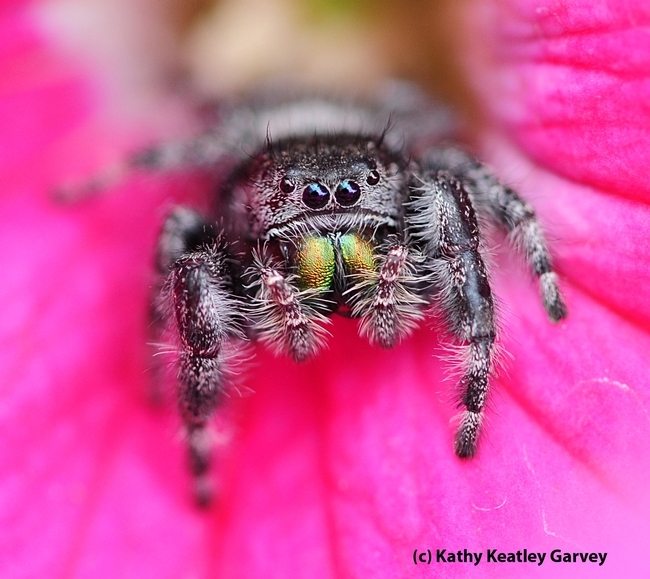
A jumping spider eyes the photographer. (Photo by Kathy Keatley Garvey)
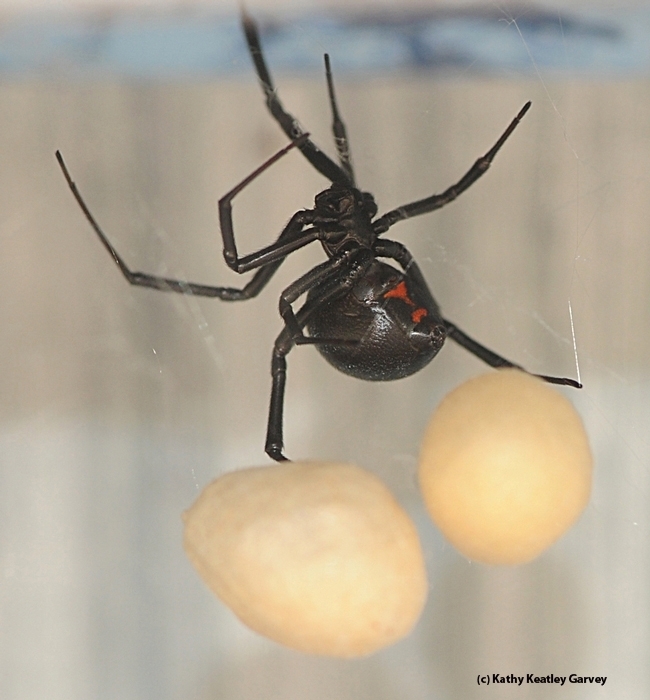
A black widow spider protecting her egg sacs. (Photo by Kathy Keatley Garvey)
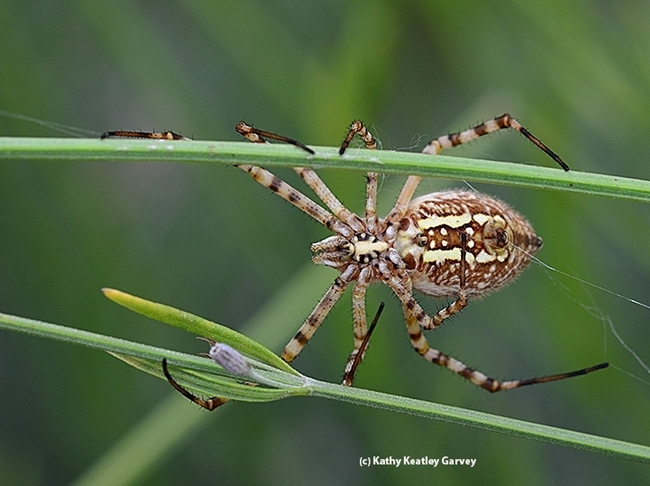
A banded garden spider checking out its surroundings. (Photo by Kathy Keatley Garvey)
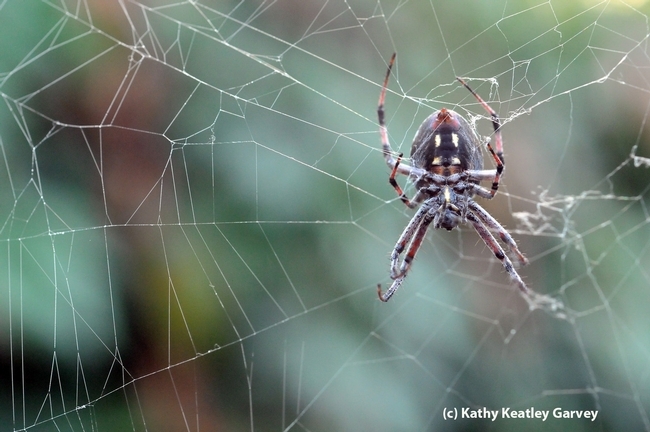
A garden spider lying in wait for prey. (Photo by Kathy Keatley Garvey)
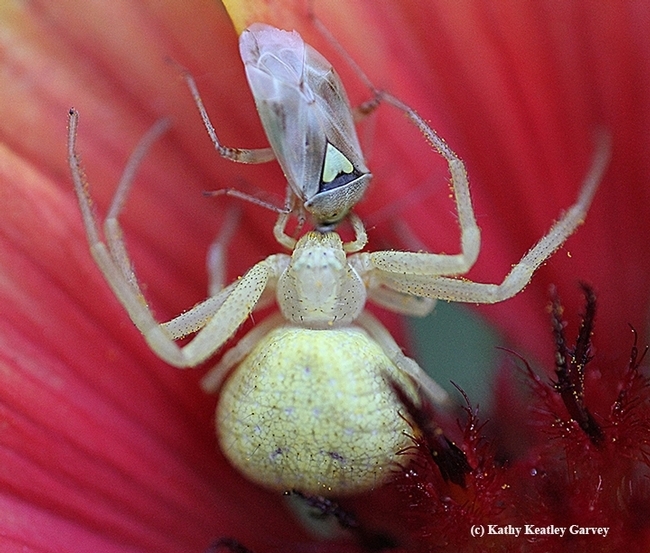
A crab spider nails a lygus bug. (Photo by Kathy Keatley Garvey)
